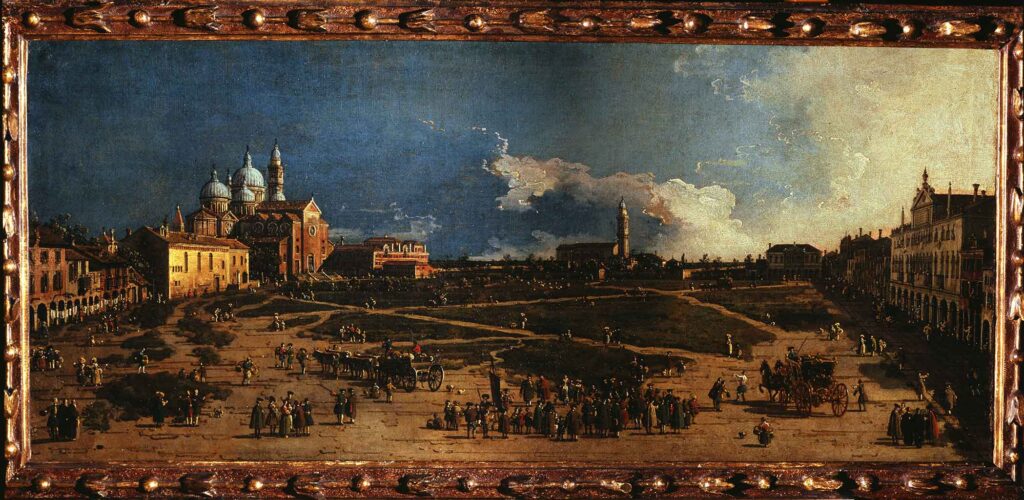Prà della Valle in Padua
Giovanni Antonio Canal detto il Canaletto , 1741 - 1746
Description

Made between 1741 and 1746, the painting depicts the square of Pra’ della Valle in Padua, before the renovations carried out in 1775-1776 altered its features. Therefore, the canvas is also a valuable record of Padua’s urban history. Many figures populate the vast open space, yet without animating it. What makes the square vibrate is not the movement of the people, but the luminosity that pervades it, the density of the shadows contrasting with the brightness of the lights; it is the sky with its gradual lightening from left to right, that accentuates the horizontal format of the canvas. The buildings at the sides of the painting delineate the extent of the square, which is covered by grass and characterized by the basilica of Santa Giustina, on the left, and the University College, on the right.
The painting is an excellent example of Venetian vedutismo, a genre that saw in Canaletto one of its masters. The artist was particularly interested in the representation of reality, and to this end he used an instrument he himself had developed: the “camera obscura”. Consisting of a box, it was placed in front of the view of which, through refracting mirrors and convex lenses, it projected the image on a much smaller scale onto a sheet of paper. The artist could thus make preparatory studies on the spot and later, in his studio, paint or etch these views. As the two etchings datable to the same years of the canvas, with Saint Giustina in Pra’ della Valle (inv. 5819) e il Pra’ della Valle (inv. 5820), donated to the Museum in 2015.
Data Sheet
Author
Giovanni Antonio Canal called Canaletto, 1697-1768
Date
1741 - 1746
Material and technique
Oil on canvas
Measures
39 cm x 87.5 cm
Acquisition
Gian Giacomo Poldi Pezzoli bequest, 1879
Inventory number
0321
location
18th Century Room
The Eighteenth-Century Veneto Room, along with the Perugino Room and the Fourteenth-Century Room, housed most of Gian Giacomo Poldi Pezzoli’s paintings. Historically known as the First Picture Room, it now houses works by Canaletto, Rosalba Carriera, Francesco Guardi, and Giovanni Battista Tiepolo.
collection
Paintings
The Museum hosts over 300 paintings. Among them, many Italian works from the Renaissance: masterpieces from Tuscany (Botticelli, Piero della Francesca, Pollaiuolo), Lombardy (Luini, Boltraffio, Solario) and Veneto (Bellini, Mantegna). Important is also the group of 18th century Italian painting (Guardi, Canaletto, Tiepolo, Fra Galgario). In the collection, there are mainly portraits and small size paintings.
